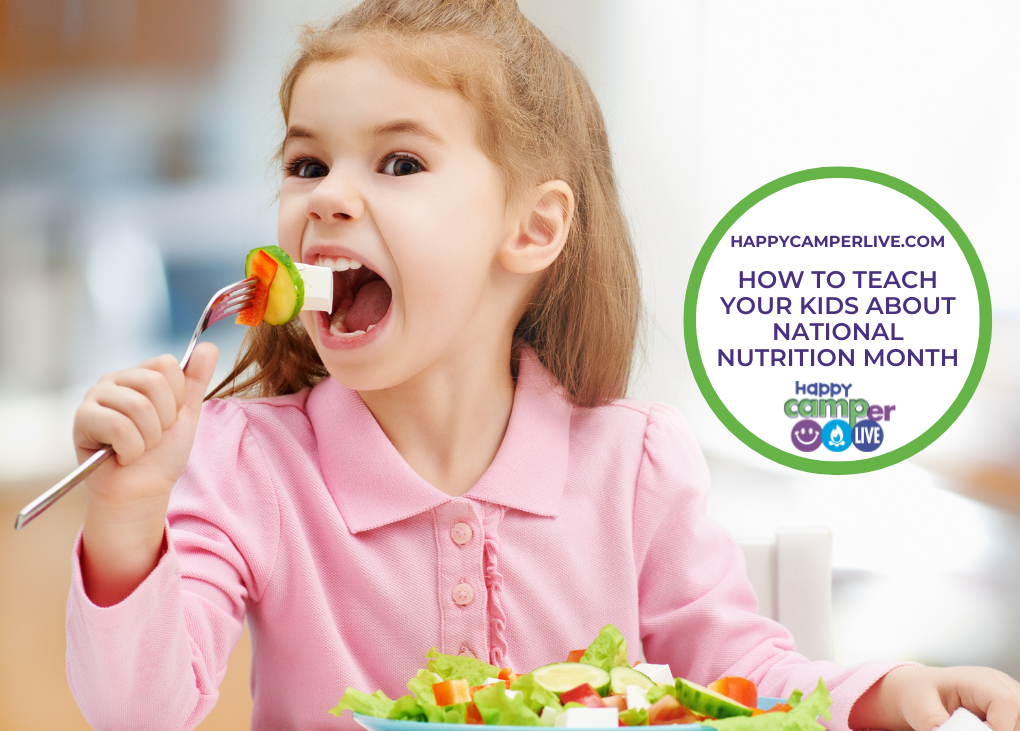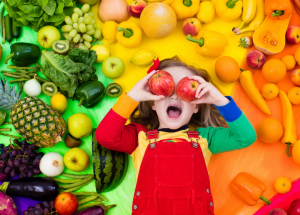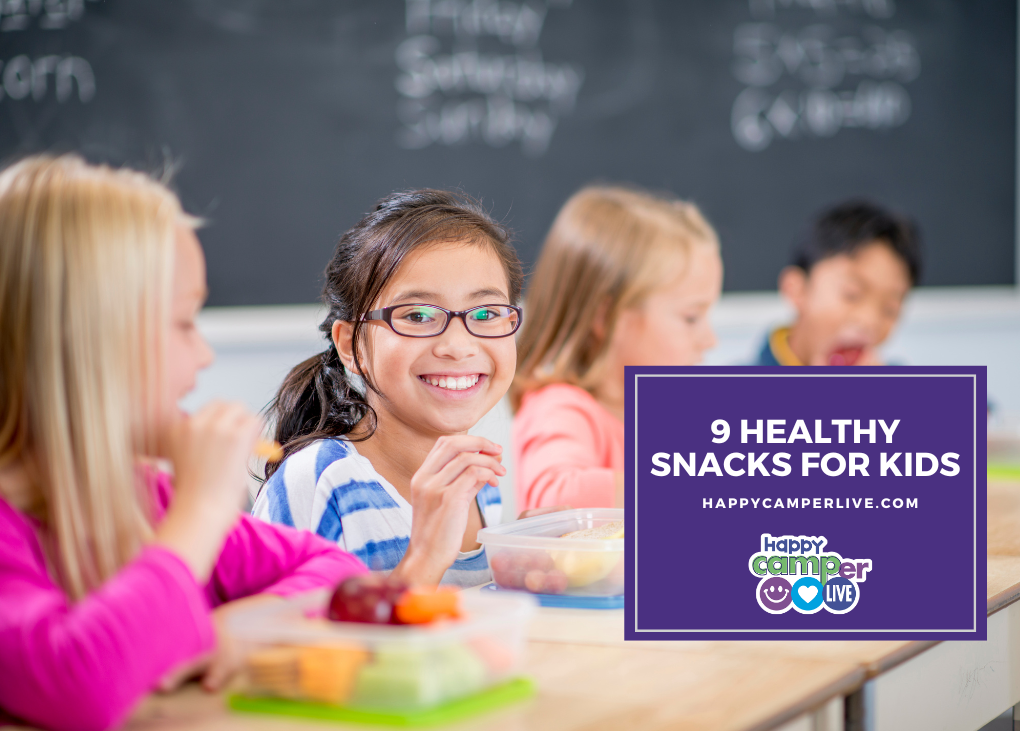
Cooking
How to Teach Your Kids About National Nutrition Month
Written By: happycamperEvery year in March, the Academy of Nutrition and Dietetics celebrates National Nutrition Month as a reminder for everyone, especially the children, about the importance of nutrition in maintaining our overall health and well-being.
There’s no better time to start teaching your child about the importance of healthy eating habits and sustainable food practices. This year’s theme, “Beyond the Table,” encourages families to explore the journey of food from farm to fork while emphasizing concepts like food production, distribution, and minimizing waste.
Are you ready to participate in this year’s Nutrition Month? Here are seven engaging ways to educate and inspire your kid during this special celebration:
Explore the USDA MyPlate Nutrition Guide
Start by introducing your child to the USDA MyPlate Nutrition Guide. This is a visual tool that illustrates the five food groups necessary for a balanced diet. Using current scientific studies about nutrition, this guide gets updated regularly to present a more accurate picture of food recommendations.
You can use colorful images and interactive activities to help your child understand the importance of incorporating fruits, vegetables, grains, proteins, and dairy into their meals. You can make crafts using colored paper to make a poster or diagram of the MyPlate guide. For a more realistic presentation, you can ask your child to come up with their own MyPlate during mealtime.
Get Involved in School Activities
Many schools participate in National Nutrition Month by organizing events and educational programs. Find out if your child’s school is participating, and try to find ways for you to contribute in spreading awareness about these programs.
For your part, you can also encourage schools to get involved by giving away merchandise promoting Nutrition Month, such as silicone wristbands, water bottles, lunch boxes, or bookmarks. Not only does this promote awareness, but it also instills a sense of pride in supporting healthy initiatives at school.
 Discover Fruits and Vegetables
Discover Fruits and Vegetables
Introduce your child to new fruits and vegetables every day. At every meal, try to encourage them to try these different foods. Talk to them about the nutritional benefits of each fruit and vegetable.
In honor of this year’s theme, share some facts about how these fruits and vegetables are preserved through different techniques like canning, freezing, and drying. Better yet, find some examples of food in your kitchen showing these preservation techniques.
If you have the space in your garden to start a vegetable patch, why not grow some vegetables with your kid? You can start by sowing seeds in seedling trays and labeling them. Come summer, you and your family can grow these seedlings in your garden or greenhouse if you have one.
Learn Where Food Comes from
Turn grocery shopping into a learning experience by teaching your kid about where their food comes from. In particular, talk about the journey of fruits, vegetables, grains, and proteins from farms to their plates.
You can also explore the importance of supporting local farmers and choosing sustainable food options whenever possible. For example, you can talk about the difference between organic vegetables and commercially produced vegetables. Touch on the benefits of local and organic farms. All these conversations with your child will hopefully guide their food choices as they grow up and buy their own food.
 Cook Together as a Family
Cook Together as a Family
Do you have picky eaters in your family? This Nutrition Month may be the best time to educate them and have them develop some healthier eating habits. As a family, you can cook nutritious meals together and make it a bonding moment with your child. By allowing your child to help you in the kitchen, they can better appreciate the love and care that goes into their meals.
Moreover, it also presents an opportunity for you to introduce important concepts like minimizing food waste. You can demonstrate this concept in a fun and engaging way by coming up with recipes that utilize your leftover ingredients.
Read Books About Nutrition
Incorporate educational books about nutrition into your child’s bedtime or storytime routine. To keep your kid engaged, choose age-appropriate books that explore topics like healthy eating habits, the importance of fruits and vegetables, and the impact of food choices on our bodies and the planet. Indeed, reading together not only promotes literacy but also sparks meaningful conversations about nutrition and wellness.
Lead by Example
There’s no better way to teach children about nutrition and food preparation than modeling healthy eating habits and sustainability practices yourself. A study published in the international research journal Appetite showed how parents modeling healthy eating habits can lead to a child’s adequate consumption of these healthy vegetables and fruits.
That’s why it’s important to make it a practice in your home to prepare healthy meals, limit food waste, and grow your own food, if possible. As your child grows up in this healthy environment, they can incorporate these habits and practices as they become healthy and wholesome adults.
National Nutrition Month is a wonderful opportunity to inspire your child to embrace healthy eating habits and sustainable food practices. You can guide them in making informed choices about their food and become an advocate of health and wellness in their communities. By engaging them in fun and educational activities, you can empower them to make informed choices about their diets and become advocates for health and wellness in their communities.
Tagged:- family nutrition, parents
RELATED ARTICLES

Cooking
9 Healthy Snacks For Kids
At camp, on the go, or just hanging out at home, kids need fuel that keeps them energized and tastes great. Healthy snacks don’t have to be boring—especially when you add a little creativity! Here are nine delicious and nutritious snack ideas kids will love, plus easy steps to make them together. Ants on a […]
Activities
Science
STEM
7 Super Easy Science Experiments For Kids
Science is all around us, and there’s no better way to spark curiosity in kids than with hands-on experiments! These simple science activities use everyday items and are perfect for young scientists to explore at home or at camp. Let’s dive into some fun with these 7 super easy science experiments for kids. #1 Magic […]
Read More...
Activities
Parents
April Fools’ Pranks For Kids
April Fools’ Day is the perfect time to bring some silly fun into your home! This April Fools’ Day (April 1), have some fun moments with your kids. If you’re looking for harmless pranks that will have your kids giggling (without any tears or mess to clean up), here are some easy and playful ideas […]
Read More...
Activities
Outdoor adventure
Science
Solar Eclipse Crafts & Activities For Kids
Get ready for an awe-inspiring celestial event! On March 29, 2025, a solar eclipse will grace the sky, making it the perfect opportunity for kids to learn about space and science in a hands-on, exciting way. These solar eclipse crafts and activities will spark curiosity and make the event even more memorable. Solar Eclipse […]
Read More...
Activities
Arts and crafts
11 Easy Earth Day Crafts & Activities for Kids
Celebrate Earth Day with these simple and fun activities that teach kids about taking care of the planet. From recycled crafts to nature walks, there’s something for everyone! Try these 11 Easy Earth Day Crafts & Activities For Kids! Nature Collage Take a nature walk and collect leaves, flowers, and small twigs. Arrange them […]
Read More...
HAPPY CAMPERS
Make A Mother’s Day Card
Read More...
4 Quick and Easy Tennis Ball Games
Read More...
Winter Holiday Camp at Happy Camper Live
Read More...
5 Fun Ways For Kids To Develop Their Singing Voice
Read More...
categories
Activities (238)
Arts and crafts (74)
Camp stories (11)
Camp traditions (23)
Campers (91)
Cooking (41)
Education (6)
Family activities (84)
Featured camps (12)
Gift Guides (12)
Music (9)
Outdoor adventure (32)
Parents (63)
Podcast (25)
School (15)
Science (14)
Sports (32)
STEM (8)
Water sports (1)


